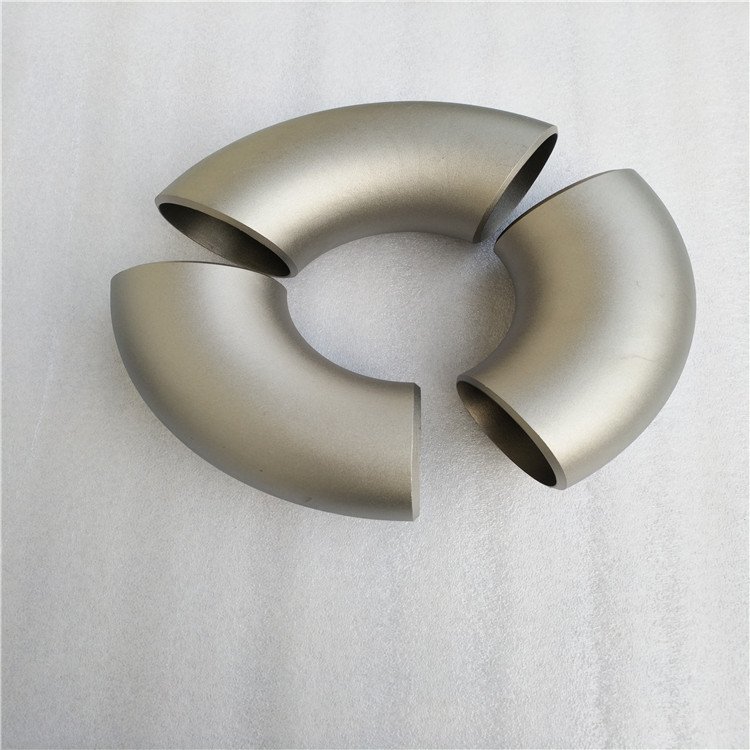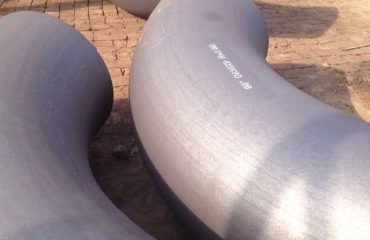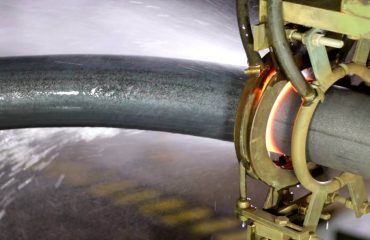
je. Core Content and Scope of ASTM B363 Titanium Alloy Butt-Welding Fittings
The ASTM B363 standard comprehensively governs titanium and titanium alloy butt-welding fittings, principalement pour un service résistant à la corrosion et à haute température. Les spécifications clés incluent:
- Material Sources and Processing Requirements
- Raw materials must comply with ASTM standards: assiettes (B265), bars / billettes (B348), sorts (B381), tuyaux sans couture (B861), and welded pipes (B862).
- Manufacturing processes include forging, extrusion, rolling, flexion, soudage, etc., with strict avoidance of harmful defects.
- Dimensions et tolérances
- Fittings must conform to ASME B16.9 and MSS SP 43 normes.
- Seamless fittings: ½” à 8″ tailles; wall thickness SCH 5S to SCH 80S.
- Welded fittings: ½” to 16″ tailles; same wall thickness range.
- Examples: Grade 2 seamless 90° elbows (2″ & 4″, SCH 40), concentric reducer (4″×2½″, SCH 40).
- Heat Treatment and Inspection
- Mandatory stress-relieving annealing for optimized mechanical properties.
- Contrôles non destructifs: 100% TP (penetrant testing) for surfaces, RT (tests radiographiques) for welds.
Ii. Types and Applications of Titanium Butt-Welding Fittings
(A) Types communs
| Type de | Fonction & Spécifications |
|---|---|
| Coudes | 45°, 90°, 180° bends; long radius (LR) or short radius (RS) for directional changes. |
| Réducteurs | Concentric/eccentric designs for pipe diameter transitions (par exemple., 4″×2½″ SCH 40). |
| T-shirts | Equal/unequal tees, lateral tees for fluid branching. |
| D’autres | Capuchons, U-bends, Talon de joint lapin se termine, crosses. |
(B) Key Industries
- Chemical & Pétrochimique
- Resistant to acids/alkalis in reactors, Échangeurs de chaleur.
- Aérospatial
- Fuel/hydraulic systems: high strength-to-weight ratio reduces structural weight.
- Génie maritime
- Seawater desalination, subsea pipelines: superior corrosion resistance vs. en acier inoxydable.
- Energy & Puissance
- High-temperature applications (par exemple., nuclear cooling systems), serviceable up to 500°C.
III. Processus de fabrication & Spécifications techniques
(A) Material Processing
- Melting: Vacuum consumable electrode arc melting or electron beam melting for purity.
- Forgeage: Multi-step upsetting/drawing to refine microstructure.
- Extrusion: Performed at 750–1300°C with glass lubricants; extrusion ratio ~100.
(B) Formation & Soudage
- Seamless fittings: Piercing extrusion or cross-rolling.
- Welded fittings: Compliance with ASTM B861/B862; post-weld annealing (450–650°C for 1–5 hours).
Iv. Normes dimensionnelles: ASME B16.9 vs. MSS SP 43
| Paramètre | ASME B16.9 | MSS SP 43 |
|---|---|---|
| Portée | Carbon/alloy/stainless steel (NPS ½”–48″) | Thin-wall stainless/nickel alloys (SCH 5S/10S) |
| OD Tolerance (NPS≤4″) | ±0.03″ | ±0.03″ (NPS≤4″); +0.06″/-0.03″ (NPS≥5″) |
| Pressions nominales | SCH 10–XXS (full range) | SCH 5S/10S only; short-pattern lap-joints |
V. Impact of Stress-Relieving Annealing
- Propriétés mécaniques
- Strength reduction: Tensile/yield strength drops 5–10% (par exemple., TC18 alloy: 1100 MPa → 950 MPa).
- Ductility improvement: Elongation increases 20–30%; enhanced impact toughness.
- Microstructure
- Above 650°C: Reduced α-phase, increased metastable β-phase.
- Recommended for TA18 alloy: 450–500°C × 3–5 hours.
Vi. Product Examples (ASTM B363 Grade 2)
| Produit | Taille | Épaisseur de paroi | la norme |
|---|---|---|---|
| 90° Coude | 2″ & 4″ | SCH 40 | ASME B16.9 |
| Concentric Reducer | 4″×2½″ | SCH 40 | MSS SP 43 |
VII. Quality Control & Essai
- CND: 100% RT for welds, PT for surface defects.
- Dimensional checks: Laser scanning/CMM for compliance (par exemple., elbow angle tolerance ±0.03°–0.75°).
VIII. Industry Trends & Innovations
- Material advancements: High vanadium/molybdenum alloys (par exemple., WPT23) pour >600°C service.
- Process innovation: Fabrication additive (3D printing) for complex geometries; lead time reduced to 10–15 days.
This translation provides a technical overview of ASTM B363 titanium alloy fittings, covering standards, manufacturing, candidatures, and emerging technologies for engineering reference.



Tu dois être connecté Poster un commentaire.